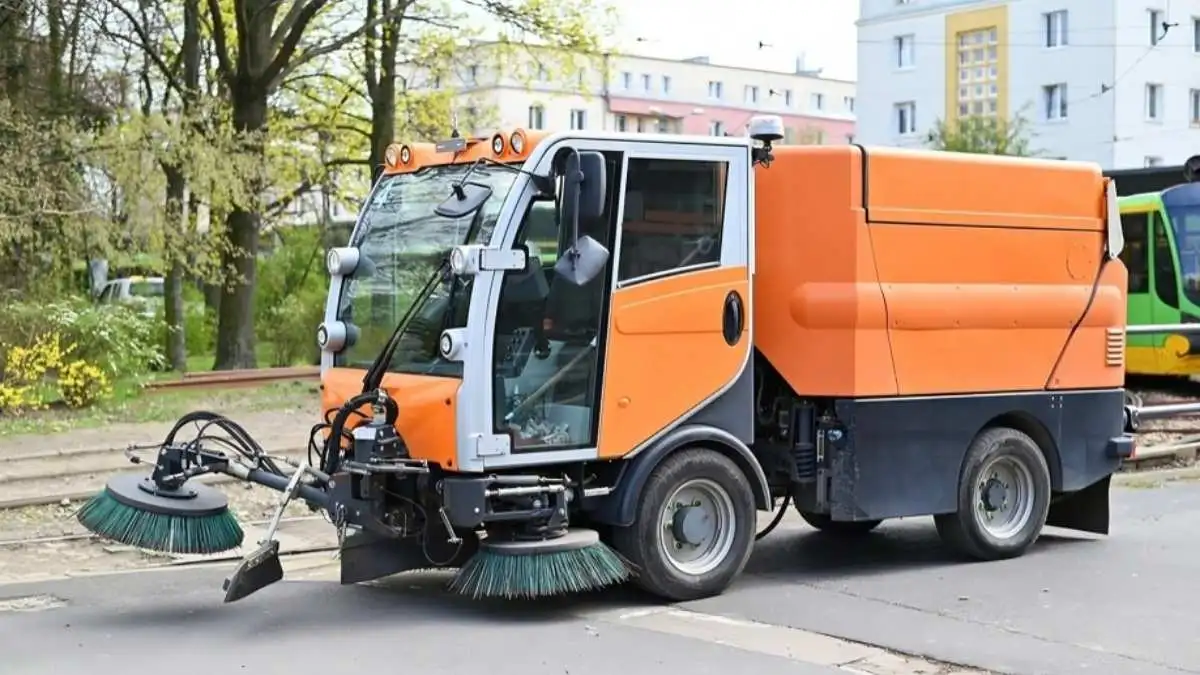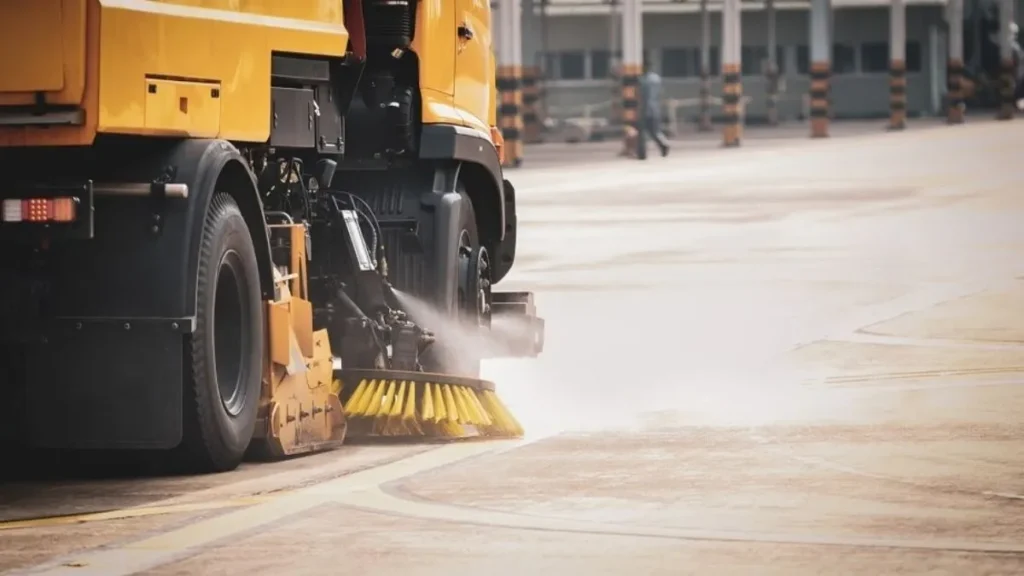SERVICES
The Environmental Impact of Street Sweeping: How It Protects Our Ecosystem

Street sweeping is often associated with maintaining clean roads and enhancing the visual appeal of urban areas, but its impact extends far beyond aesthetics. This essential service plays a critical role in protecting the environment by reducing pollution, preventing stormwater contamination, and improving air quality. As cities and communities strive to adopt more sustainable practices, street sweeping emerges as a key solution for minimizing environmental harm and supporting healthier ecosystems.
By removing debris, sediment, and hazardous materials from roadways, street sweeping helps to mitigate pollution that would otherwise enter waterways and affect wildlife. Additionally, modern sweeping technologies contribute to reducing airborne particulates, ultimately improving air quality. This article explores the environmental benefits of street sweeping and highlights how this service supports sustainability efforts in urban and suburban settings.
Table of Contents
1. Preventing Water Pollution
One of the most significant environmental benefits of street sweeping is its ability to prevent pollutants from entering water sources. When debris and contaminants accumulate on roads, they are easily carried into storm drains and local waterways during rainfall.
How Street Sweeping Helps:
- Reduces Runoff Contamination: Removing oil, heavy metals, and chemicals from road surfaces prevents these substances from being washed into rivers and lakes.
- Prevents Algae Blooms: Excess nutrients from decomposing leaves and organic matter contribute to harmful algal blooms in water bodies, which deplete oxygen levels and threaten aquatic life.
- Protects Marine and Freshwater Species: Cleaner stormwater helps sustain fish, amphibians, and other wildlife by maintaining natural water chemistry.
Regular street sweeping significantly reduces the amount of debris and pollutants entering stormwater systems, ensuring that communities have cleaner and safer water resources.
2. Reducing Airborne Pollutants and Improving Air Quality
Air pollution is a growing concern in urban environments, where vehicle emissions, construction activities, and road dust contribute to poor air quality. Street sweeping plays an essential role in minimizing airborne particulates that can pose serious health risks.
The Role of Street Sweeping in Air Pollution Control:
- Captures Fine Dust Particles: Vehicles stir up fine dust, which contains harmful pollutants such as heavy metals and tire residue. Sweeping removes these particles before they become airborne.
- Prevents Respiratory Issues: Reducing dust and pollutants in the air lowers the risk of respiratory conditions such as asthma and bronchitis.
- Supports Cleaner Urban Environments: Removing dirt and debris from streets prevents the spread of pollutants that can settle on buildings, vehicles, and public spaces.
Modern street sweepers are equipped with advanced filtration systems and vacuum-assisted technology to capture even the smallest airborne contaminants, making a direct impact on urban air quality.
3. Minimizing the Impact of Stormwater Erosion
Stormwater erosion is a significant environmental concern, particularly in areas with heavy rainfall. When excessive debris and sediment accumulate on streets, they can clog drainage systems and contribute to flooding.
How Street Sweeping Helps Manage Erosion:
- Prevents Drain Blockages: Keeping storm drains clear ensures that rainwater can flow freely, reducing the risk of localized flooding.
- Limits Soil Erosion: When debris is removed from streets, it prevents the displacement of sediment that can damage nearby landscapes and waterways.
- Preserves Infrastructure: Properly maintained drainage systems reduce the long-term costs associated with repairing erosion-related damage to roads and public spaces.
By integrating street sweeping into stormwater management programs, municipalities can minimize the negative environmental effects of urban runoff and erosion.
4. Supporting Wildlife and Biodiversity
Urban pollution has a direct impact on wildlife, particularly in areas where contaminants from roads can spread into natural habitats. By keeping streets free of hazardous materials, street sweeping helps protect local ecosystems.
Benefits for Wildlife and Natural Habitats:
- Prevents Toxic Exposure: Wildlife is less likely to encounter and ingest harmful substances such as plastics, oil residues, and metal debris.
- Reduces Habitat Disruption: Cleaner environments lead to healthier ecosystems, supporting birds, small mammals, and aquatic species.
- Limits the Spread of Invasive Species: Removing seeds, plant debris, and organic waste from roadways helps prevent the spread of invasive species that can outcompete native plants.
Ensuring that urban and suburban streets are kept clean contributes to maintaining the balance of natural ecosystems and supporting biodiversity.
5. Reducing Landfill Waste Through Recycling Initiatives
Many cities have adopted recycling programs that incorporate street sweeping waste management, helping reduce landfill contributions and promoting sustainability.
Sustainable Waste Management Practices:
- Sorting and Recycling Debris: Metals, plastics, and organic waste collected from street sweeping can be separated and repurposed.
- Composting Organic Matter: Leaves, grass clippings, and biodegradable materials can be composted rather than sent to landfills.
- Reusing Road Materials: Sand and gravel removed during sweeping can be recycled for use in construction and road maintenance projects.
By implementing waste reduction strategies, street sweeping programs contribute to a more circular economy that prioritizes resource efficiency.
6. Energy-Efficient and Eco-Friendly Street Sweeping Technologies
Advancements in street sweeping technology have led to more sustainable and energy-efficient equipment, reducing the environmental impact of cleaning operations.

Innovations in Sustainable Street Sweeping:
- Electric and Hybrid Sweepers: Many modern sweepers use electric or hybrid power, significantly reducing fuel consumption and emissions.
- Water-Conserving Systems: Newer machines use less water while still effectively controlling dust and debris.
- Smart Route Optimization: GPS-enabled street sweepers follow the most efficient paths, reducing fuel waste and improving operational efficiency.
Municipalities and private companies that invest in eco-friendly street sweeping technology contribute to lowering carbon footprints while maintaining clean urban environments.
7. Enhancing Community Sustainability Efforts
Street sweeping is a vital component of broader sustainability initiatives aimed at reducing urban pollution and improving public health. Cities and businesses that prioritize regular street cleaning play a crucial role in creating cleaner, more livable environments.
How Communities Benefit from Regular Street Sweeping:
- Encourages Public Participation: Clean streets promote civic pride and encourage residents to contribute to environmental preservation efforts.
- Aligns with Green City Initiatives: Many sustainability-focused urban plans include street sweeping as part of their pollution reduction strategies.
- Improves Overall Quality of Life: Well-maintained streets lead to healthier, safer, and more pleasant public spaces.
Partnering with professional street sweeping services, such as Pure Power Sweeping, ensures that communities maintain high environmental standards while reducing pollution and supporting sustainability.
Conclusion
Street sweeping is more than just a maintenance service—it is a critical environmental protection measure. By reducing water pollution, improving air quality, preventing stormwater erosion, and supporting wildlife, regular street sweeping has a lasting impact on ecosystems and urban sustainability.
Companies like Pure Power Sweeping help cities and businesses uphold these environmental standards, ensuring that streets remain clean and communities remain safe. As more municipalities embrace sustainable practices, investing in street sweeping programs will continue to play a vital role in preserving the environment for future generations.
For more helpful blog posts and advice on a range of topics, head to the blog now.
-

 GENERAL2 months ago
GENERAL2 months agoUncovering the World of кинокрадко: The Dark Side of Film Piracy
-

 GENERAL1 month ago
GENERAL1 month agoUnveiling the Art of преводсч: How Translators Bridge Language Barriers
-

 GENERAL3 weeks ago
GENERAL3 weeks agoChristofle – For Those Who Dream of Family Heirloom Silver
-

 YOGA1 year ago
YOGA1 year ago4 Person Yoga Poses for Beginners























